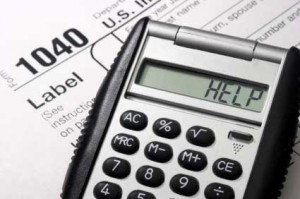Every tax season, consumers across the country hope that when their returns are completed a refund will soon be on the way. Consumers that qualify for the Earned Income Tax Credit (EITC) program are likely among the most anxious to receive their refunds, as it usually represents a significant cash infusion.
Just as consumers wait a full year in hopes of receiving a refund, high-cost and high profit lenders are just as anxious to take substantial amounts from consumers’ hard-earned dollars.
One of the worst offenders are those who offer Refund Anticipation Loans, also known as RALs. Generally offered by banks and tax preparation services, RALs are one of the shortest term loans available and come with some of the highest fees. The loans, backed by turning over your refund to the lender, provide consumers with instant cash – but these consumers then forfeit a sizeable portion of their refund. The larger the refund, the larger the RAL fees.
Consumers using these predatory loans are often unaware that the range of choices now offered by the Internal Revenue Service. Waiting periods for tax refunds are now just a day or two. With options such as e-filing and direct deposits, there is no need to give a bank or tax service your dear dollars.
The Federal Deposit Insurance Corporation (FDIC) used its regulatory authority to discourage banks from offering RALs. Many might presume that Members of Congress would congratulate the FDIC for its consumer-friendly stance.
Instead, on March 16 members of the House Financial Services Committee criticized FDIC for alleged ‘abusive tactics’ rather than focusing on the FDIC’s push to prevent harm to consumers and risks to banks. The attack is unfortunate, given that most people want government to have their back. It is even harder to understand in light of the economic devastation wrought by lax enforcement of financial regulation having led to the 2008 economic crisis. If there was a lesson to be learned from this still incomplete recession, it is that most people want effective and aggressive enforcement of consumer protection laws.
“Tax refund anticipation loans preyed on low-income consumers by charging extraordinarily high prices – as high as 500 percent APR – in exchange for receiving tax refunds a little early,” noted Mike Calhoun, president of the Center for Responsible Lending. “As the bank repaid itself, it also collected high fees directly from the refund …. The FDIC acted responsibly and should continue to take action when banks engage in suspect and predatory practices.”
In many cases, consumers eligible for the EITC may not owe any taxes at all; but must file in order to receive the credit. The actual EITC amount varies depending on the adjusted gross income, and size of the household. For 2015, a single head of household’s adjusted gross income could be as low as $14,820 or as high as $47,747. Similarly, a married couple filing jointly could have an adjusted gross income ranging from $20,330 to $53,267. Additional information on EITC is available on the IRS web<https://www.irs.gov/Credits-&-Deductions/Individuals/Earned-Income-Tax-Credit/Do-I-Qualify-for-Earned-Income-Tax-Credit-EITC>.
A few hundred or a couple thousands of dollars may not mean much to trillion-dollar enterprises, but it can mean all the difference in the world to a financially-struggling family: catching up on past due bills, finally a chance to go see a doctor, or even putting a little aside for the family’s financial well-being.
If you’ve earned a tax refund, every dollar of it should be yours to keep.






Your report on RALS is inaccurate in almost all respects. This may have been true in years past but your facts are all wrong.
Almost all parties involved in RALS offered this tax season offered these loans at 0% to taxpayers. While fees between $35-60 were charged by the lender to the TAXPREPARER the lender required that these cost be spread over all customers and not to those receiving the loan and each preparers are randomly audited by the lenders for conforming to this program. Some preparers absorbed the cost with the hope of generating more business and others pass along the cost across their customer base with everyone paying slightly higher fees. This is similar to zero percent loans offered by car companies. Loans this year ranged from $500-2500 at zero percent. Most all these loans are done on a non recourse basis to the taxpayer, and if he/she doesn’t get the expected refund the loan is forgiven. You owe your readers a redo! Very bad reporting!
Records of the House Financial Services Committee’s deliberations on these loans is public information. If you do, you can see for yourself what the committee’s criticisms are.
Charlene, if you used HOUSE RECORDS for this article you should have said these were past practices and do not reflect the current RAL environment. Instead you infer that the RECORDS reflect current practices which they do not. You wouldn’t write an article about the music industry today and talk about sales of DVDs. Relying on historic data to explain what is happening now is simply lazy, inaccurate, and false reporting. You need to investigate the current market (what I said about RALS was also true in 2014) and report on that. I look forward to your article that corrects the record!
Just like 0% offers from car dealers, RALS are a good deal for consumers today!